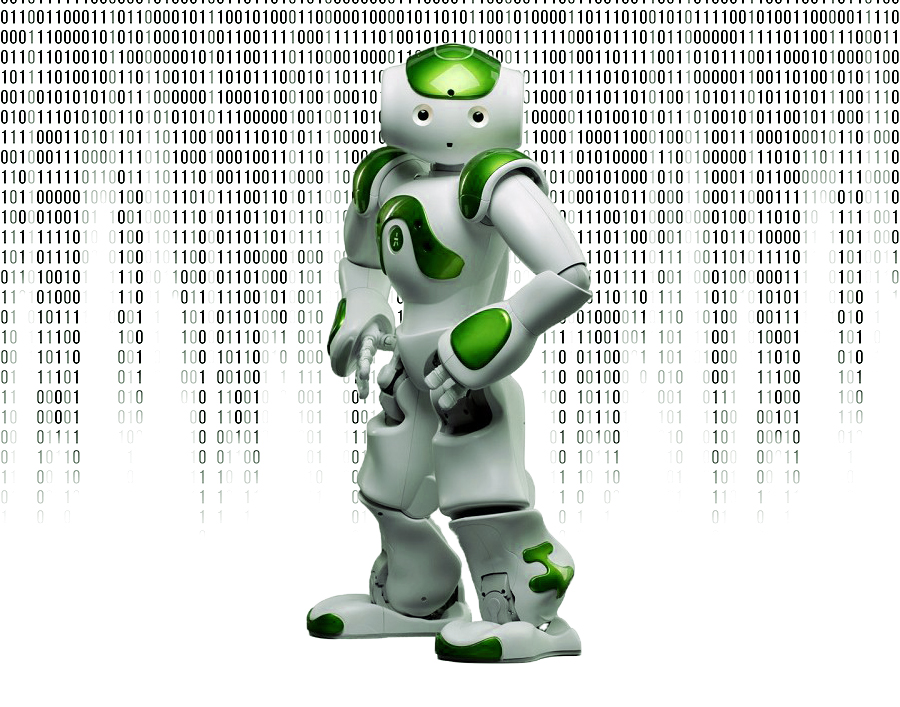
Robohub.org
Python programming your NAO robot
 These videos aim to teach you how to begin programming your NAO with Python. The NAO can be programmed using several programming languages, including C++, MATLAB, JAVA, LabVIEW and Python. Instead of using the drag and drop boxes in the Choreograph, we’re going to get our NAO robot walking and talking using coding.
These videos aim to teach you how to begin programming your NAO with Python. The NAO can be programmed using several programming languages, including C++, MATLAB, JAVA, LabVIEW and Python. Instead of using the drag and drop boxes in the Choreograph, we’re going to get our NAO robot walking and talking using coding.
Tutorial 1: Speech
Helpful hints:
Follow these steps to create a box that we could put our python code into, and have our robot speak: “Hello”. “Hello I am a robot”.
- Right click the main section box and go to “add new box”
- Create a name for the box
- Input main image
- Select the type of box
Now we’re having a look at the script. Go into the scripts and click ok. And there we have our NAO little box. If we click into it, we have the python code. What we are going to do is change some of the codes to get our robot to speak.
- Double click the box
- Select the piece of code you need to alter to get our robot to speak(“def onInput_onStart(self)”)
- Take out the pass section
- Type in “ttsproxy = ALProxy(“ALTextToSpeech”)”. (Make sure you get the comment in there).
- Underneath that, we are going to put “ttsproxy.say” and add the comment “Hello, I am a robot”.
The first line could create an object that gives us access to the robot’s text to speech capabilities. This object is assigned to the variable ttsProxy. We can access the object later through the name ttsProxy. I am going to mount the top line, and the alspeech is there. The second line calls a different function site. This function takes an argument “Hello, I am a robot” and then he uses a string or sequence of characters between two double quoted marks. The robot will speak the string that will pass to the say message aloud. There are your simple first steps into python and choreograph.
You can now, hopefully, get your NAO robot to talk by using your python programming skills. Now have a play with it’s behavior to see if you can get your NAO to say a longer sentence, or maybe even sing a song. Have a play, and use your imagination!
Tutorial 2: Walking
Helpful hints:
No we’re going get your robot to walk using Python. The NAO can be program to walk to any point using the in-build Python Programming Language instead of using the drag and drop boxes in the choregraphe. Python is more expressive and allows you to do things like computing trigonometric calculations on the robot.
- Right click the main section box and go to “add new box”
- Create a name for the box
- Input main image
- Select the type of box
First, we want our robot to stand up. Drag a stand up icon into the box. I am actually using the NAO key so the 3D robot in the robot view, and this because we need to put the robot on connecting so we can see what’s going on quite clearly. Oversee when you are using this on the real robot and never forget to trigger on the motors and connect everything up properly.
Open the Code Box
- Go to “def onInput_onStart(self):”
- Write “motionProxy = ALProxy(“ALMotion”)”
- On the next line write “walkTo(0.2,0.0,0.0)”
- End it with “self.onStopped()”
The first line is a proxy called ALmotion, which what is we created here, which allows us to call the motion functions up. The second line is the walkTo, which moves the robot to a specific distance. Now, look on the decimal places: see that .2 is X and Y and the radius, so he’s going to move .2 forward. Then if I start playing with the other numbers here, he’ll move to the Y radius and then to the other turning point as well. The final bit is the self.on. To stop this, we will call and tell the choregraphe to stop the procedure when it is at the end and just simple loop and loop and loop.
If we are good, we should see this now on the 3D NAO. So if I hit play, we can see it walking along. Well done guys, you can now get your NAO Robot to walk by using
your Python programming skills. Tread carefully!
If you liked this article, you may also enjoy these:
- Robotics, maths, python: A fledgling computer scientist’s guide to inverse kinematics
- Sticky business: Five adhesives tested for 3D printing
- Meet RoboGabby: She’s on a mission to teach more girls about robotics
- Adjust how you learn and quickly pick up robotics programming
- 3-D printing hydraulically-powered robots, no assembly required
See all the latest robotics news on Robohub, or sign up for our weekly newsletter.
tags: Aldebaran, Algorithm Controls, c-Education-DIY, coding, education, NAO, open source, programming, Python, robot, video




